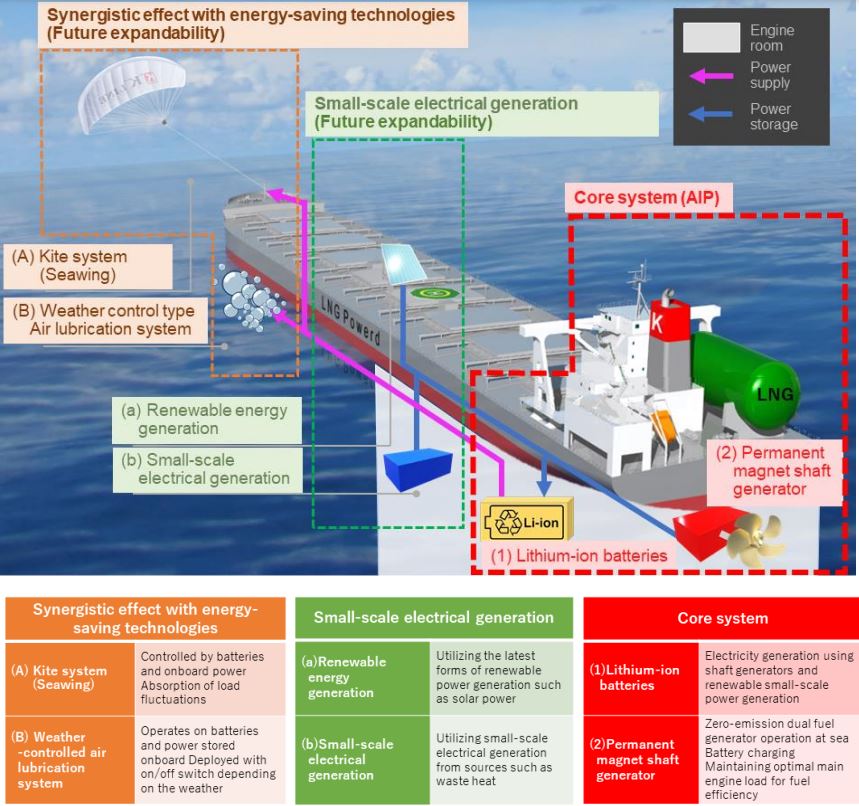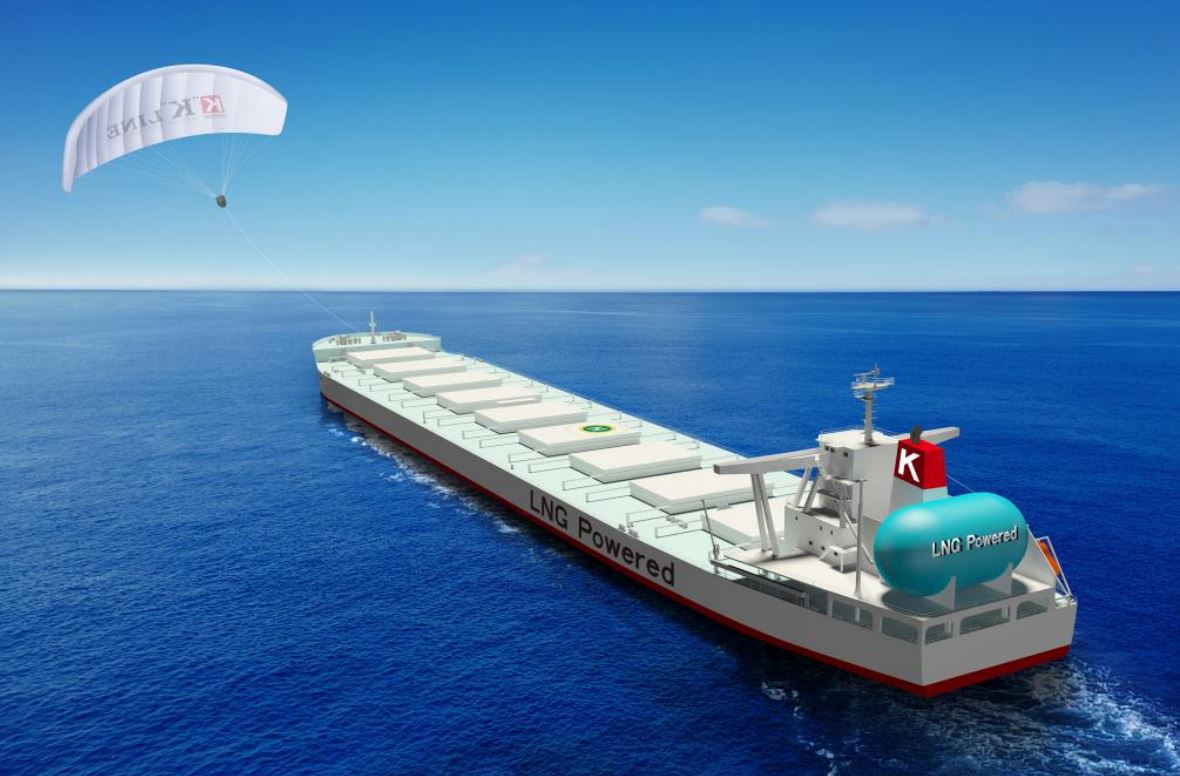Japan’s shipping firm K Line has received basic design approvals from compatriot classification society ClassNK for two LNG and battery-powered bulk carriers.
The approvals in principle are for a 200,000 ton capesize bulk carrier and 90,000 ton post-Panamax bulk carrier, according to a statement by K Line issued last week.
K Line said it has developed the capesize vessel with Namura Shipbuilding and Taiyo Electric, while the firm joined forces with Shin Kurushima Sanoyas Shipbuilding and Taiyo Electric for the smaller design.
By using LNG as fuel, the vessel would reduce greenhouse gas emissions by 25 percent to 30 percent compared to the use of conventional heavy fuel oil, K Line said.

On top of that, the design adopts permanent magnet shaft generator technology, along with lithium-ion batteries.
These additions would contribute to emission reductions of about 2.5 percent to 3 percent compared to an LNG-powered vessel without those two technologies, K Line said.
Also, PM shaft generators improve efficiency by about 10 percent compared to conventional shaft generators, it said.
By utilizing batteries as part of the platform for power supply on board, the aim is to further reduce emissions going forward by later adding green energy sources with energy-saving technology, the firm said.
Worth mentioning here, K Line, along with NYK Line and MOL, has last year signed a charter deal with Japanese steel manufacturer JFE Steel for three LNG-powered bulk carriers.
Japan Marine United and Imabari Shipbuilding will build the LNG-powered vessels and deliver them from the beginning of 2024.

